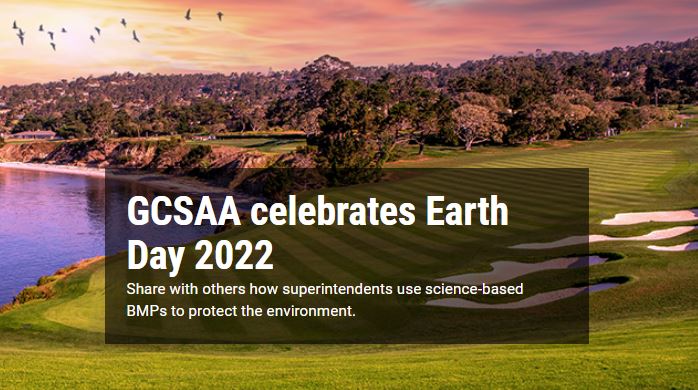Professionally managed golf courses can demonstrate environmental stewardship, while also providing health, social and economic benefits. Members of the Golf Course Superintendents Association of America (GCSAA) are focused on providing quality playing surfaces, while also protecting the environment by efficiently using water and other inputs.
In recognition of Earth Day, April 22, below are a few ways golf courses are more sustainable than many people may realize.
Golf facilities in the U.S. provide significant green space, with more than 90 percent of its overall 2-million-acre footprint contributing to that green space. An average 18-hole golf course is 151 acres with just 15 acres of bunkers, buildings and parking lots. The rest consists of native areas, roughs, turfgrass, water features and other healthy landscapes.

Golf course superintendents and their staff use science-based best management practices to provide healthy and quality playing surfaces while protecting the environment, including air, surface water and ground water. The golf course exists within and relies upon healthy soils and water.
Scientists say managed turfgrass is good for the environment in that it filters pollutants, provides cooler temperatures, prevents erosion and improves air quality. Golf courses create a habitat for wildlife, particularly in non-play areas. Meanwhile, healthy turf helps reduce pests, while limiting weed growth.
The environmental benefits are in addition to the creation of 2 million jobs, a $192-billion economic impact in America, $4 billion raised for charitable causes and recreational contributions that golf courses provide.
Much of this data came from GCSAA’s Golf Course Environmental Profile. The Golf Course Environmental Profile is a groundbreaking project launched in 2006 to develop a comprehensive environmental profile of golf courses in the United States. The GCEP is currently in its third phase, and this year GCSAA is seeking the most up-to-date data by conducting surveys on Water Use and Conservation Practices, Nutrient Use and Pest Management Practices, and Property Profile and Environmental Stewardship. The information from Phase Three will be compared against Phases One and Two to help track improvement.
For more information about golf and the environment, visit gcsaa.org


